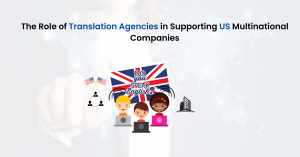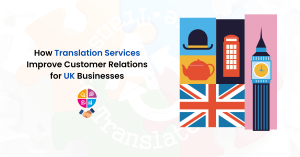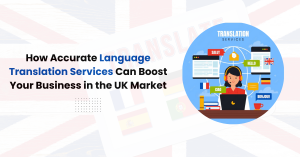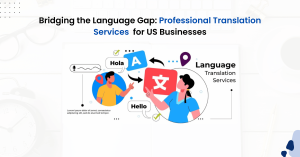Running a business nowadays means, because of the globalisation and constant growth of the international market, communicating with clients and associates from all around the world. That phenomenon especially affects corporate companies working in the public sector and the businesses exporting to other markets, which above all are the ones being present in multiple countries.
This leads to increasing needs for translation of various kinds of documents that can become really costly if a company does not find a way to limit these costs. It had been shown that the average cost of a translation patent in Europe is more substantial than in the U.S. or in Japan(1). The good news is that ways exist to avoid paying too much or too often for translation, and here a a few tips from TRANSLIT to help businesses reducing the translation costs.
Using CAT tools to gain time
The documents to be translated in professional contexts tend to follow similar structures depending on the company and its field of activity. Translating texts can then be a monotonous and even time-consuming task.
A good way for professionals to save time and energy is to invest in CAT tools. Thanks to their systems of translation memories, CAT Tools store segments of previous translations to be found again and reused very quickly. In this way, it will be much more easier and faster to translate the same type of texts over and over, especially when many elements and structures are repeated exactly the same.
The time lost until then can be used for more urgent tasks, making work more efficient.
If they have never used CAT Tools, new users will have no difficulties approaching with this user-friendly, intuitive and fast to manage software.
As a plus, TRANSLIT can help all users, professionals and not.
Aa a reseller of SDL Trados Studio, TRANSLIT can help companies to select the right tool that will fit the most to their needs. Not only they will find the right tool for their necessities, but also they will be given full assistance in managing the process, as our Company also provides CAT tools customization and training services.
What a better way to begin to use a tool, than to follow advices and guidelines of a professional guide who uses the tools for themselves?
Using machine translation
Many companies, when growing international, need to have their website available in foreign languages in order to draw customers from everywhere.
Two options are available: if a company does not have yet the necessary resources to get a professional translation of its website, the use of a google translate app or any other kind of translation app can be helpful as machine translation permits substantial cost reductions, but it remains risky as a tool not verified by human translator.
As soon as a business is thriving enough, getting its website translated by professionals is a clever step forward that will improve performance and service. TRANSLIT is the ideal provider for businesses looking for a professional and good-quality localisation service.
Writing for translation
It is critical to carefully prepare the documents before sending them to the translator. To do this, the first step is to acknowledge the projects of the business in their entirety and know exactly what they require: what are the exact subject, the word counting, the level of specialisation of the documents for each project, but also which desktop publishing application and layout to use.
Knowing these allows to determine which budget is needed for the translation, but especially which order to process with the translation: what documents will be sent first, or what is the more urgent to deal with.
The result of it is a faster translation process, easier to manage and control.
Preparing the documents may sometimes also mean modifying or rewriting it. The key is to send only what is really needed to be translated, and as raw a formatting as possible – this is what is called single-sourcing. Companies that need their documents to be translated must keep in mind while preparing their texts to keep the sentences as short as possible and strictly limited to a single idea each.
Having standardized texts to reuse is good, for it is really time-saving. If a business also needs to save money, the clever thing to do is to select only the most important and/or relevant documents for the international public.
Basically, communication between the company and the translator must be kept as simple and clear as possible. Translate only what is going to help you achieving your goals.
TRANSLIT would like to help professionals preparing their texts as good as possible, for this reason we prepared a list of things to avoid by all means while preparing the texts to send aimed at a distant culture:
- Words with double-meaning that may be uneasy to understand
- Metaphors, catchwords or jargon
- References to something proper to your home-culture only
- Abbreviations and acronyms
- Colloquial expressions and humor
Centralizing translation process
Centralizing the translation process is another way to assure communication, but also time and money savings as the translation costs can be reduced up to 40%, and the overall translation programme costs to 80%.
The aim of this is to avoid that too many factors and intermediaries are used during the translation process while only one designated person or department could be sufficient, but not only:
Having a translation process centralised within a company, that is to say only one person or department in charge of dealing with the translations will in any case assure quality at the end of the process. The reason of this is that all steps of the process will be supervised by only one entity checking for the quality and consistency, and thus avoiding any kind of misinterpretation or misunderstanding.
Most of all, it will tremendously reduce the administrative charge of the company. Less intermediaries means less tasks multiplied and time lost, it is as easy as that. Besides, less people working on a task also means less risks of making mistakes, this is what every business owner must keep in mind.
A good tip is to organise the teams in order to be as quick and productive as possible and make sure that communication is flowing between each others.
Calling for tenders
Have you ever thought about calling for tenders for your translations, instead of simply contacting a translation company or a translator and ask for their services? Switching the roles and choose the right translation provider can be more interesting for a company looking for big translation projects.
Indeed, big projects means need of quality. By calling for tenders, a business has the opportunity to study all the offers it will receive and choose only the best of them. This is also the warranty that there will not be any additional and unexpected pricing: the conditions are fixed and the tasks agreed on.
If the call for tender contains well-conceived specifications and the company agrees to work with an high-quality translator, then there are great chances that the result will also be of a high-quality.
TRANSLIT is a certified member of the Irish Translators’ and Interpreters’ Association. If after reading this article you see an opportunity for your business to use our services, we invite you to contact us in order to discuss how TRANSLIT can help your organisation saving costs on translation in the most effective way.
___
(1) https://www.translations.com/sites/default/files/imported/resources/downloads/editorials/NEWS_ExecCounsel_1007.pdf
___








